Dangers of the deep sea and the fight against them (Part 1)
Lockheed Martin’s Remote Mine-hunting System (RMS) is the primary mine detection system for US coastal defense ships fleet
Easy-to-deploy and relatively cheap sea mines and underwater explosive devices pose a real threat to fleets and commercial shipping, restricting freedom of movement in shallow water and in strategic narrow straits and aisles.
The ability to detect, locate, classify and neutralize these threats remains a key requirement for fleets around the world. The technological development of automatic underwater and surface vehicles (APA / ANA), as well as sensors and actuators in the field of mine action, allows western fleets and industry to develop networked autonomous "systems of systems" to replace the current traditional mine action equipment capable of operating at a considerable distance.
The US Navy became the first Western fleet to adopt this operational concept, which provides the expeditionary forces with regular anti-mine weapons by adopting helicopters and non-specialized, but multi-tasking platforms with special equipment. The coastal defense ships of the Freedom and Independence classes of the US Navy are at the forefront of these capabilities, using their modular compartments, manned and unmanned rotorcraft, surface and underwater systems and other built-in means for launching, returning and operating uninhabited systems at sea.
The current priority program of the US Navy provides for the development of the so-called functional Mission Package (MP) kits designed for mine action or MCM (Mine Countermeasures). The first stage of the MCM MP or Increment 1 includes the Remote Mine-hunting System (RMS), which is a Lockheed Martin AN / WLD-1 Remote Multimission Vehicle (RMMV) semi-submersible remotely controlled vehicle, towing a Raytheon AN / AQS-sonar 20A, the AN / AES-1 ALMDS airborne laser mine detection system from Northrop Grumman and the AN / ASQ-235 AMNS (Airborne Mine Neutralization System) airborne mine neutralization system from Raytheon; the last two systems are installed on board the Sikorsky SH-60S carrier-based anti-submarine helicopter. Three more planned phases will introduce new mine action systems. As part of the Increment 2 phase, the detection of mines in the coastal strip will be ensured by activating the currently deployed drone MQ-8C Fire Scout from Northrop Grumman, equipped with the CBRAS coastal reconnaissance and analysis system.
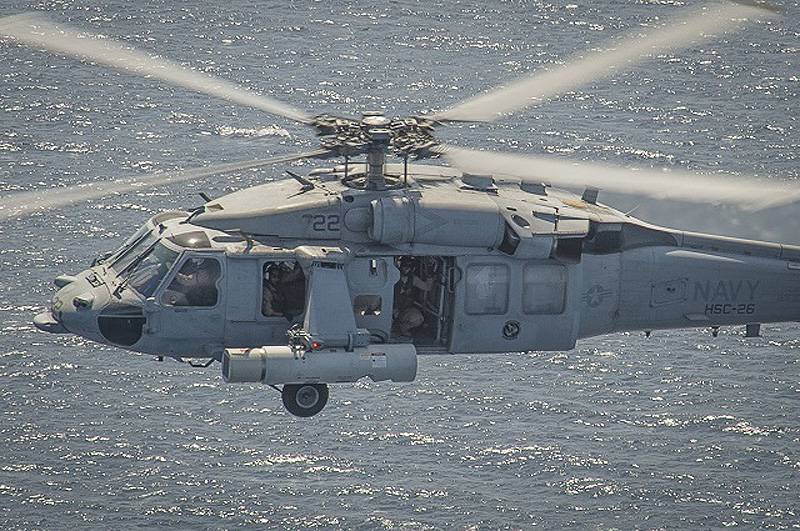
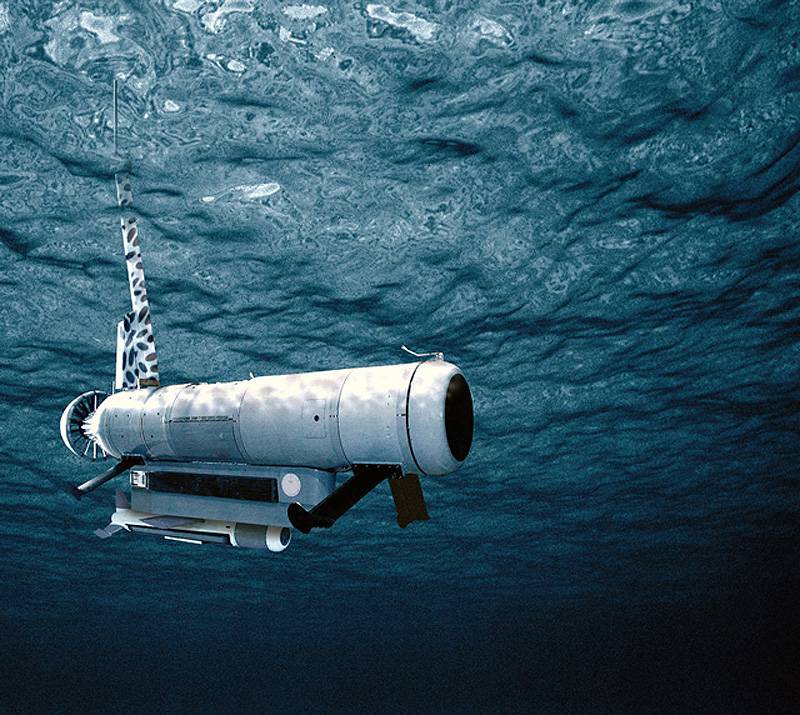
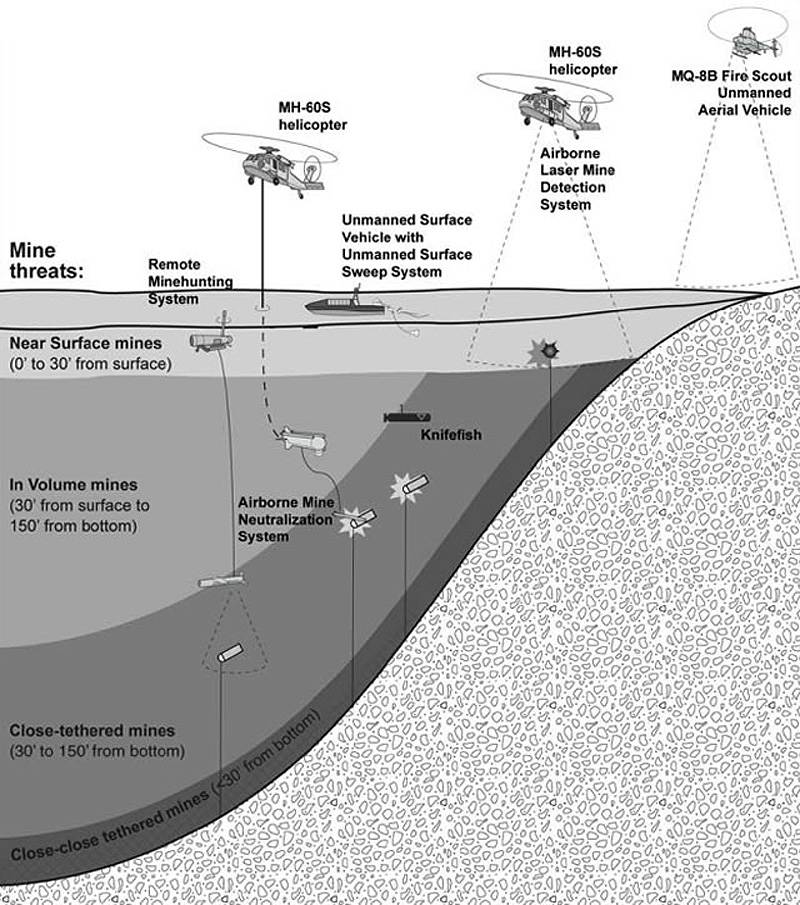
Some components of the program of the American fleet MCM MP: Sikorsky SH-60S helicopter and the Remote Mine-hunting System (RMS) mine search system. Below is a rough outline of the combat use of these components.
European activities
As part of the next stage, the remote contactless (multipulse) unmanned Influence Sweep System (UISS) remote system, developed by Textron Systems, which is based on the ANA, which in turn is a modification of the boat for the remote destruction of CUSV sea mines of the same company, will go into service. This device tows a long submerged cable that generates a magnetic field with an acoustic generator Mk.104, which allows you to remotely detonate mines. The fourth step involves the delivery of APA Knifefish, the development of which is headed by General Dynamics Mission Systems. This underwater vehicle is a further development of the Bluefin-21 APA, it will be equipped with a side-scan sonar that will detect buried mines at speeds of up to three knots (5,5 km / h) at depths up to 275 meters. However, the main component of the MCM MP Increment 1 first stage, which is the Remote Minehunting System (RMS) remote mine clearance system, had reliability issues that could delay the initial operational tests and evaluation of the MCM MP project and the subsequent issuance of contracts for initial small-scale production.
Although many of the world's fleets are looking at established multi-purpose / specialized platforms capable of deploying remote mine action systems, European shipbuilders retain leadership in the design and production of mine action vessels, promoting new designs and retrofit kits. For example, in 2011, Thales received a contract from the Lithuanian Ministry of Defense to upgrade two Hunt-class anti-mine warfare vessels from the presence of the British fleet, which were transferred to the Lithuanian fleet in July 2013. The contract included the upgrading of ships and the integration of Thales Sonar-2193 sonar, Thales M-CUBE anti-mine action control systems, the installation of ECA’s modern broadband mine detector and ECM single-use K-STER EMDV (Expandable Mine Disposal Vehicle) unmanned underwater vehicles with fiber optic control cable.
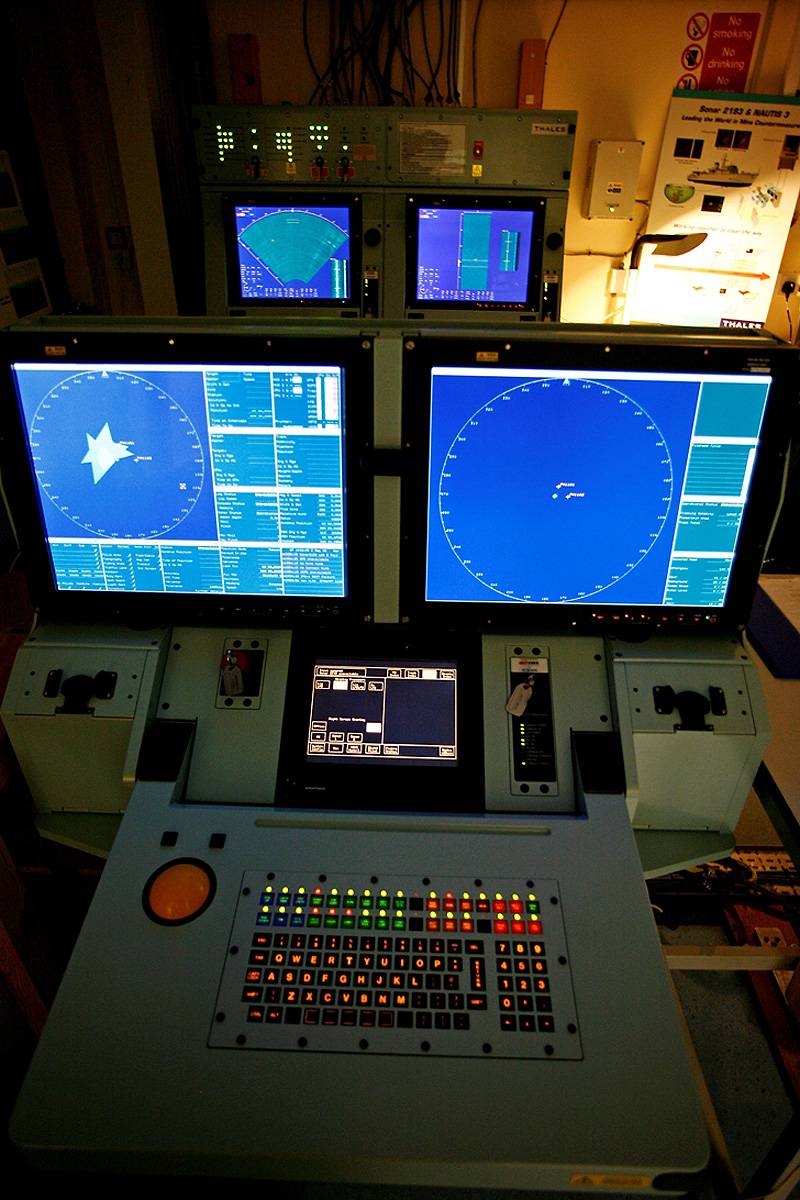
Case-mounted Thales Sonar-2193 sonar and Sonar-2093 variable-depth sonar, together with the TSM-2022 Mk.III modular sonar, represent modern mine control solutions
The forces and anti-mine forces of the British fleet today mainly consist of eight Hunt-class ships and seven Sandown-class ships, which are maintained in working condition by repairing platforms and introducing new equipment supplied by BAE Systems and Babcock International. Hunt-class vessels are equipped with a Thales Sonar-2193 sonar, and Sandown vessels are equipped with a Sonar-2093 variable depth sonar. The first of these sonars uses a broadband technology that significantly increases the efficiency against mines with a low reflected echo intensity. The Sonar-2093 Sonar stations of the “Sandown” ships should also be upgraded in accordance with the contract issued to Thales at the end of 2014. All ships of these classes also have remotely operated underwater vehicles for checking and deactivating SeaFox mines manufactured by Atlas Elektronik / Ultra Electronics.
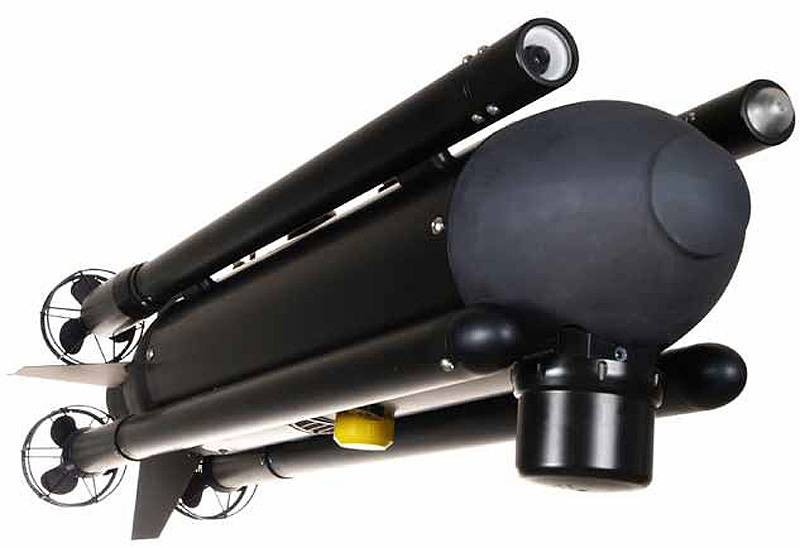
Remotely controlled underwater vehicle for checking and disposing of mines SeaFox MKII
In order to further enhance the capabilities of the British fleet in the field of mine action through the introduction of non-contact mine clearance on vessels of the Hunt class, Atlas Elektronik received a contract to design and build a prototype of a non-contact mine trawling surface vehicle that can be deployed from ships of this class, followed by its demonstration in full featured mode. So far the details have not been disclosed, but the system should be based on the Atlas Elektronik patented by the remote-controlled ARCIMS (Atlas Remote Capability Integrated Mission Suite) surface minesweeper. The ARMICS system, already delivered to the fleet of a not-called Middle Eastern country, includes an optionally piloted surface unit manufactured by ICE Marine, which can accept alternative anti-mine action modules.
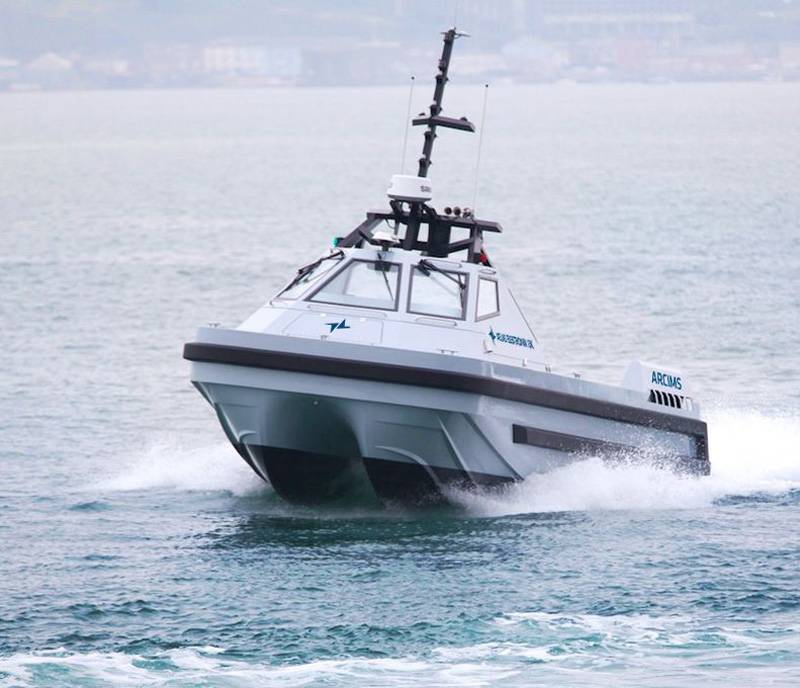
ARCIMS remotely controlled surface minesweeper
The German shipyard Lürssen builds specialized anti-mine warfare vessels, Navantia competes with it, offering its vessels of the “Segura” class. For its part, Saab offers a larger version of its Landsort and Koster mine sweepers, which are in service with the Swedish fleet, as well as the Bedok ship, which is part of the Singapore fleet. The hull of the new version, called “Enhanced Koster”, is lengthened by five meters (up to 52,5 meters) in order to get more crew space and systems and improve navigation, as well as be able to carry out future upgrades. Thales, meanwhile, completed the upgrading of Bedok class vessels in 2014 by upgrading the mine monitoring and control system by installing the TSM-2022 Mk.III mine search sonar in the ship hull, integrating the K-STER EMDV underwater mine sweepers and integrating the towed sonic aperture sonar Thales DUBM-44, which allows to reduce the time required to survey the area for the presence of explosive hazards.
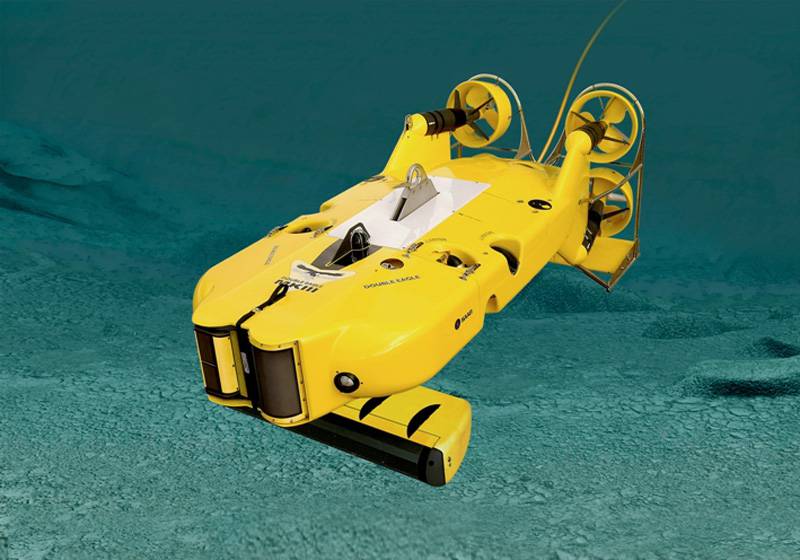
Saab offers a family of semi-autonomous remotely operated underwater vehicles Double Eagle Mk.II / III ROV. The newest addition to the family is the Multi-Shot Mine Neutralisation System
In September, the Polish industrial consortium, consisting of the Remontowa group, the shipyard of Gdynia and the marine technology center CTM as a system integrator, launched the first of three minesweepers for the Polish fleet in September, following the Kormoran-II program. An initial delivery of these vessels is scheduled for November 2015. The project includes the SCM-CTM mine action monitoring and control system and mine detection, identification and neutralization systems, including the Saab Double Eagle PVDS (Propelled Variable Depth Sonar) sonar and the Kongsberg Maritime submersible HUGIN 2016 MR.
With long traditions and extensive experience in building reinforced fiberglass anti-mine ships and supplying such ships to Australia, Finland, Italy, Malaysia, Nigeria, Thailand and the United States, the Italian shipbuilding company IMMSI is currently participating as the lead contractor in the construction of anti-mine ship for an unnamed foreign customer under a contract signed with Orizzonte Sistemi Navali (a joint venture between Fincantieri and Finmeccanica) with an option to build a second similar on. According to various sources, the anti-mine ship with a special control system from Selex and a family of remotely operated search and neutralization vehicles of the Gaymarine Pluto mines of the family is expected to be delivered to the Algerian fleet. IMMSI also participates in the modernization program on the average life of eight Gaeta class anti-mine vessels of the Italian fleet, which includes platform modification and system overhaul, the introduction of the Selex mine control system, the Thales Sonar-2093 sonar and the latest Pluto remote control devices. Gaymarine gigas.
Remotely controlled apparatus for search and neutralization of mines of the Pluto family
The Italian shipyard is also part of an international industrial group, led by Taiwanese shipbuilding company Ching Fu Shipbuilding. In October 2014, the American company Lockheed Martin announced the delivery of six anti-mine vessels to the Taiwanese fleet. The first ship of this class, equipped with the Lockheed Martin mine search and trawling control system, will be supplied by an Italian shipyard in Taiwan and completed by a local company, while the following ships will be built and equipped on site with technical assistance from the Italian company. Completion of deliveries is expected by 2024.
The Russian Sredne-Nevsky Shipbuilding Plant, part of the United Shipbuilding Corporation, launched in October 2015 the first of two anti-mine defense ships ordered by the Kazakh Ministry of Defense, the raid minesweeper of the 10750E project. The minesweepers are equipped with various anti-mine weapons, including a control system, a SeaBat sonar from Teledyne Reson, disposable K-Ster EMDV mines and guided underwater vehicles Alister-9.
Raid minesweeper of the project "10750E", built by the Sredne-Nevsky Shipbuilding Plant
To be continued
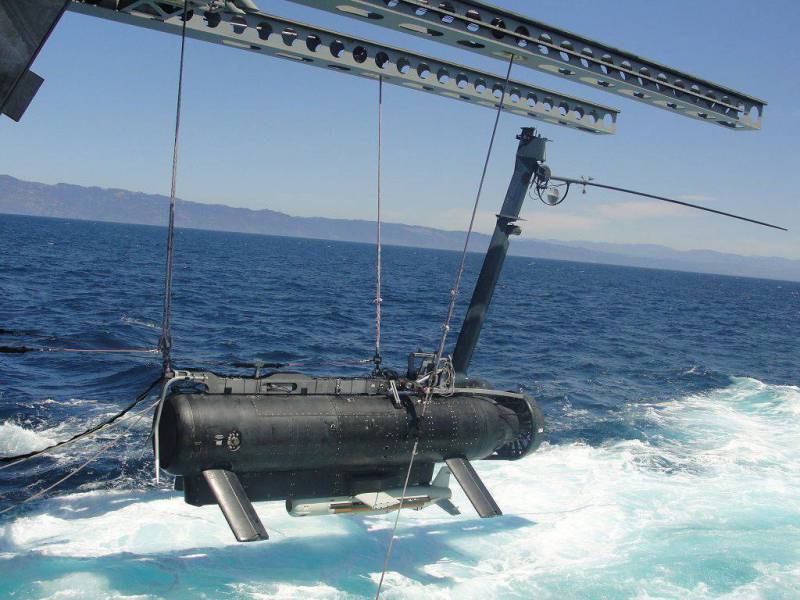
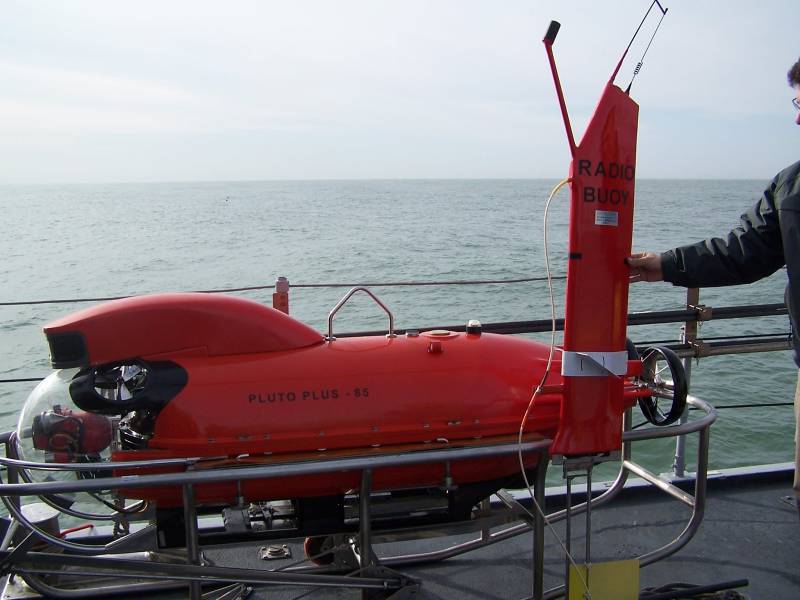
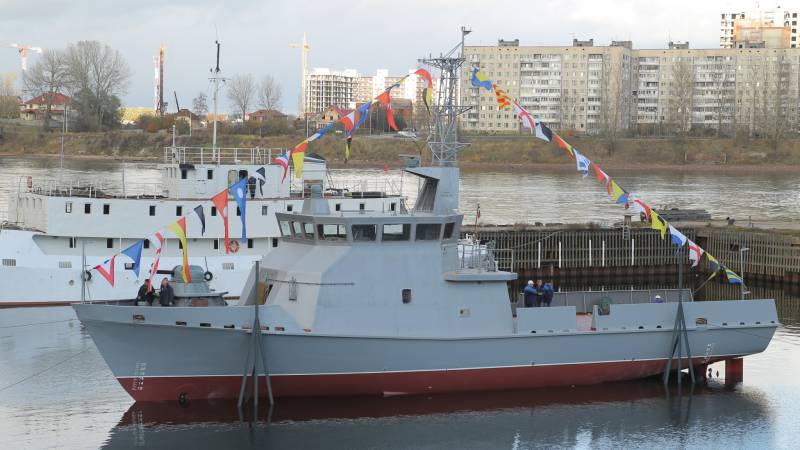
Information